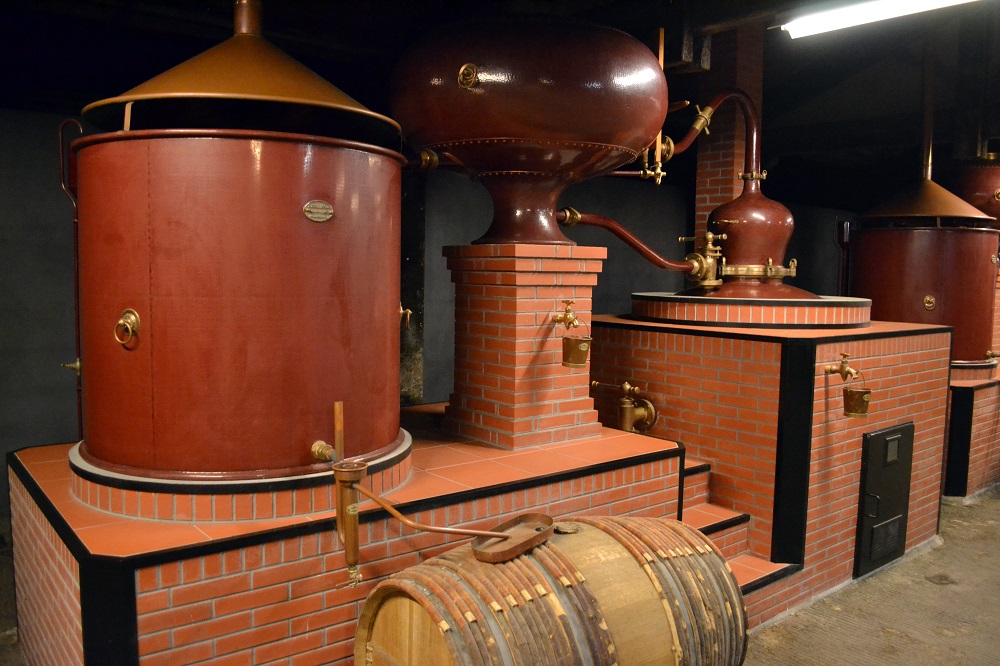Eau-d-vie means literally “water of life” and is a term that is used to refer to any distilled fruit. The eau-de-vie (or eaux-de-vie plural) is clear when produced.
Eau-de-Vie does not become Cognac until it is eventually blended because Cognac is a blend of different eaux-de-vie that are carefully selected and combined by a master blender to create a harmonious and complex flavor profile. This blending process is essential to achieving the rich complexity and depth of Cognac, as it allows the spirit to develop a wide range of flavors and aromas that would be impossible to achieve with a single eau-de-vie. The blending process is a closely guarded secret, passed down from generation to generation, and the master blenders are revered as the guardians of the ancient art of Cognac-making. They are known to spend countless hours in their cellars, tasting and blending eaux-de-vie until they find the perfect balance of flavors, aromas, and textures.
Eau-de-Vie, a French term meaning “water of life,” is a clear, unaged fruit brandy that captures the essence of the fruit from which it is distilled. This spirit, with its rich history and diverse applications, is a testament to the craftsmanship of distillers around the world. In this blog post, we’ll explore the process of making Eau-de-Vie, its role in various liquors, and its importance in the world of Cognac, where its double distillation process is key to achieving perfection.
What is Eau-de-Vie? Eau-de-Vie is a clear, unaged fruit brandy made from various fruits, including grapes, pears, apples, cherries, and plums. The fruit is fermented and then distilled to create a spirit that is clear and aromatic, with a high alcohol content. The term “Eau-de-Vie” is often used to describe fruit brandies from France, but it can also refer to similar spirits from other countries, such as German Schnapps and Italian Grappa.
How is Eau-de-Vie Made? The process of making Eau-de-Vie begins with the selection of the best fruit. The fruit is then crushed, fermented, and distilled to create a spirit that is clear and aromatic. The distillation process typically involves two stages: a first distillation to create a low-alcohol spirit called brouillis, and a second distillation to create the high-alcohol Eau-de-Vie.
Eau-de-Vie and Its Applications in Liquors: Eau-de-Vie is a versatile spirit that can be used in a variety of ways. It is often enjoyed neat or on the rocks, but it can also be used in cocktails to add a unique flavor and aroma. In addition, Eau-de-Vie is an important ingredient in many liqueurs, such as Grand Marnier and Cointreau, where it is used to add depth and complexity to the flavor profile.
Eau-de-Vie and Cognac: The Double Distillation Process for Perfection: Cognac, a type of brandy made from grapes grown in the Cognac region of France, is a prime example of the use of Eau-de-Vie in spirits production. The double distillation process used to create Cognac is a crucial step in achieving the spirit’s unique character and flavor profile.
The first distillation takes place in a pot still, where the fermented grape juice is heated to produce a low-alcohol spirit called brouillis. The brouillis is then distilled a second time in a traditional Charentais pot still, where the alcohol is separated from the water and other impurities. The resulting spirit, known as eau-de-vie, is then aged in oak barrels for a minimum of two years, where it develops its rich color and complex flavor.
The double distillation process is essential to the creation of Cognac, as it allows the distiller to achieve a high level of purity and concentration in the final product. The first distillation removes impurities and concentrates the alcohol, while the second distillation refines the flavor and aroma of the spirit. This process is the key to creating Cognac’s unique character and complexity, and it is what sets it apart from other spirits.
Eau-de-Vie is a versatile and important spirit that plays a key role in the production of many different liquors, including Cognac. Its double distillation process is essential to achieving the high level of purity and concentration that makes Cognac so unique and complex. Whether you enjoy it neat or in a cocktail, Eau-de-Vie is a testament to the skill and craftsmanship of distillers around the world.

